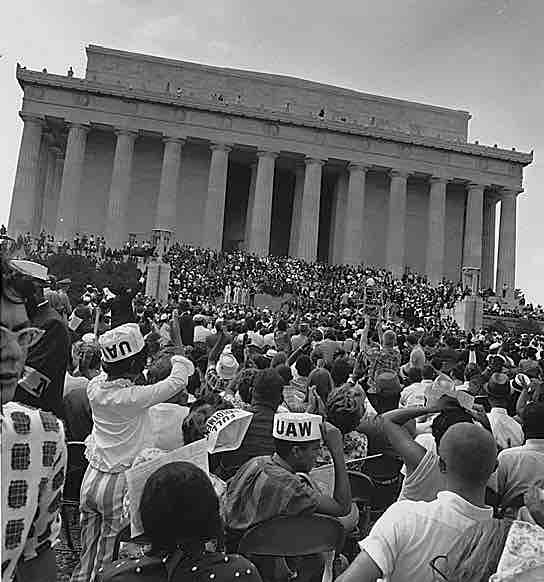The African American Civil Rights Movement refers to the social movements in the United States aimed at outlawing racial discrimination against black Americans and restoring voting rights to them. The Civil Rights Movement generally lasted from 1955 to 1968 and was particularly focused in the American South.
After the period of Reconstruction, the American South maintained an entrenched system of overt, state-sanctioned racial discrimination and oppression. Characteristics of this system, also known as "Jim Crow," included racial segregation, voter disenfranchisement, economic exploitation, and organized violence against the black community. African Americans and other racial minorities resisted this regime in numerous ways and sought better opportunities through lawsuits, new organizations (such as the National Association for the Advancement of Colored People), political redress, and labor organizing.
After the Brown v. Board of Education decision in 1954, civil rights organization broadened their strategy to emphasize "direct action"—primarily boycotts, sit-ins, Freedom Rides, marches and similar tactics that relied on mass mobilization, nonviolent resistance and civil disobedience. This mass action approach typified the movement from 1960 to 1968. Churches, local grassroots organizations, fraternal societies, and black-owned businesses mobilized volunteers to participate in broad-based actions. This was a more direct and potentially more rapid means of orchestrating change than the traditional approach of mounting court challenges.
Key events in the Civil Rights Movement included: the Montgomery Bus Boycott (1955-1956), which began when Rosa Parks, a NAACP secretary, was arrested when she refused to cede her public bus seat to a white passenger; the desegregation of Little Rock Central High School (1957); the Selma to Montgomery marches, also known as Bloody Sunday and the two marches that followed, were marches and protests held in 1965 that marked the political and emotional peak of the American civil rights movement which sought to secure voting rights for African-Americans. All three were attempts to march from Selma to Montgomery where the Alabama capitol is located. The student sit-ins protesting segregated lunch counters (1960); the Freedom Rides (1961) in which activists attempted to integrate bus terminals, restrooms, and water fountains; voter registration drives; and the March on Washington for Jobs and Freedom (1963), in which civil rights leader, Martin Luther King, Jr. delivered his famous "I Have a Dream" speech.

The March on Washington
The March on Washington, a key event in the U.S. Civil Rights Movement.